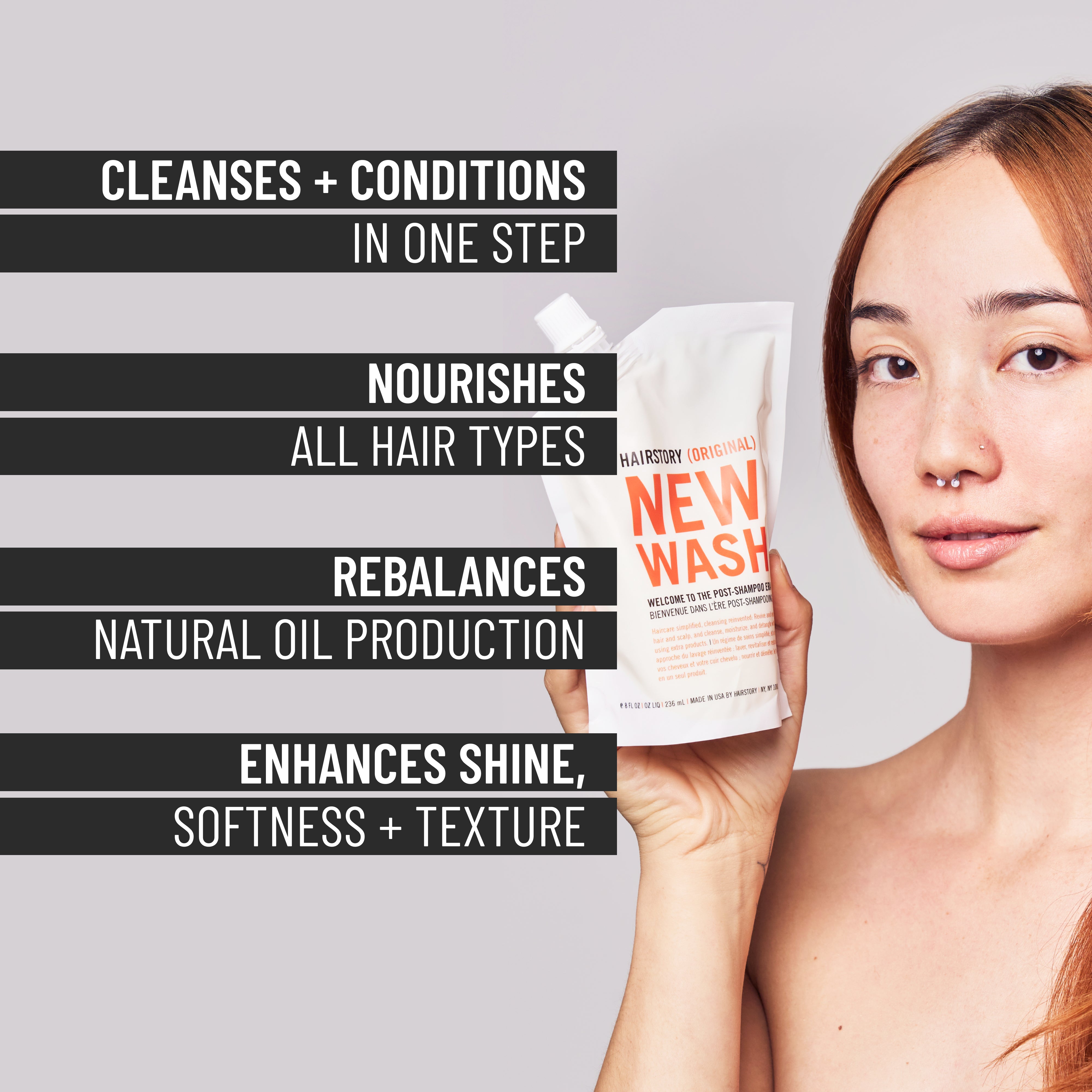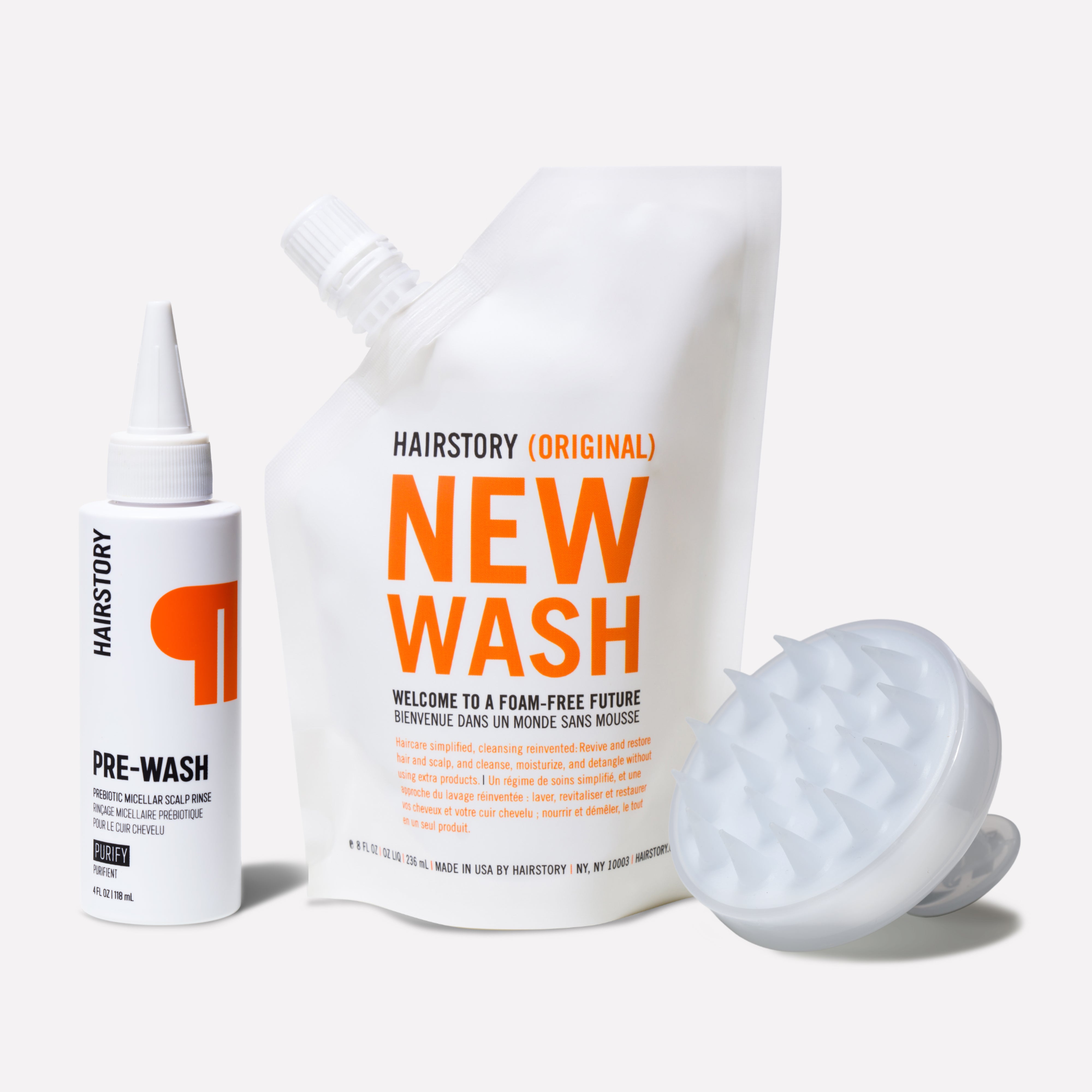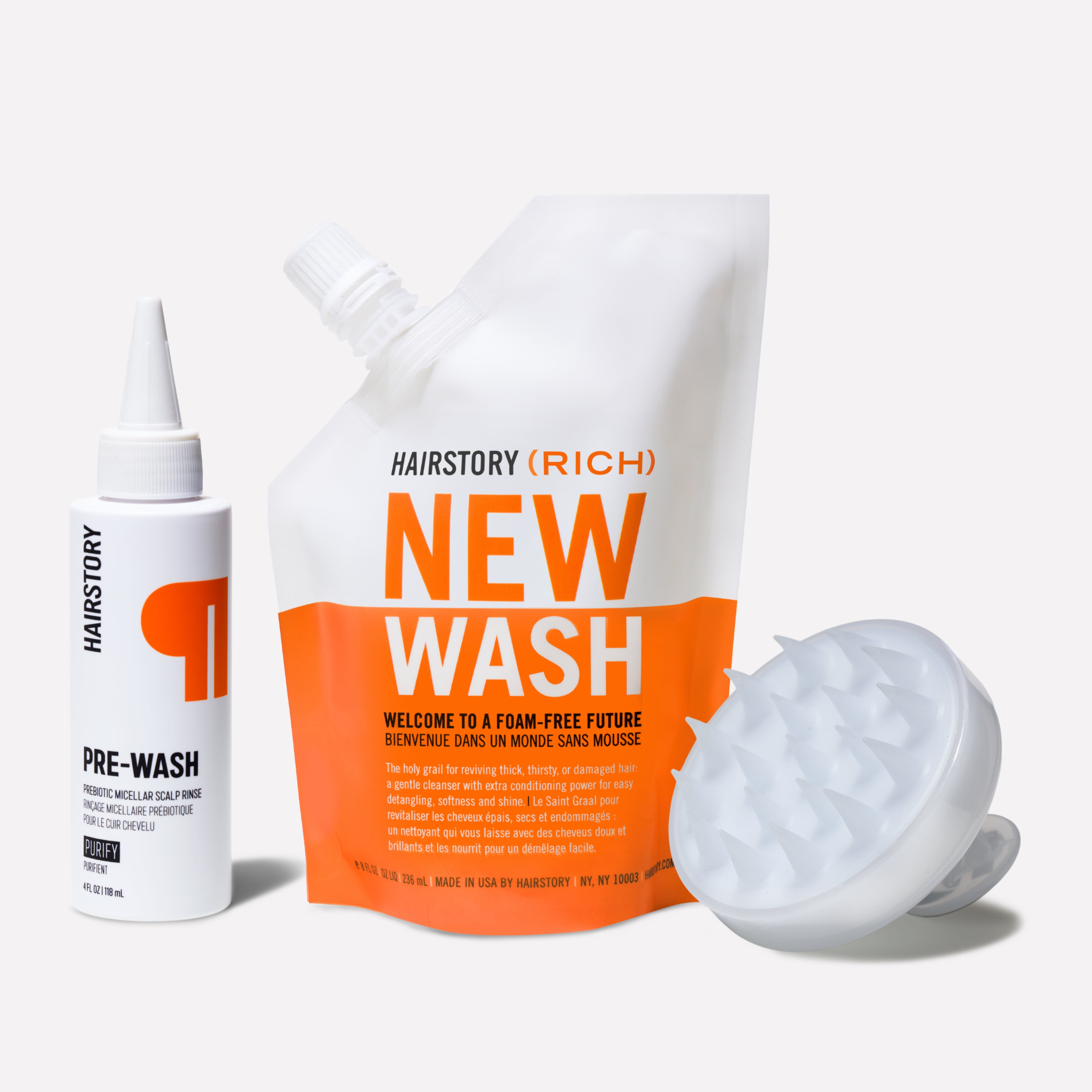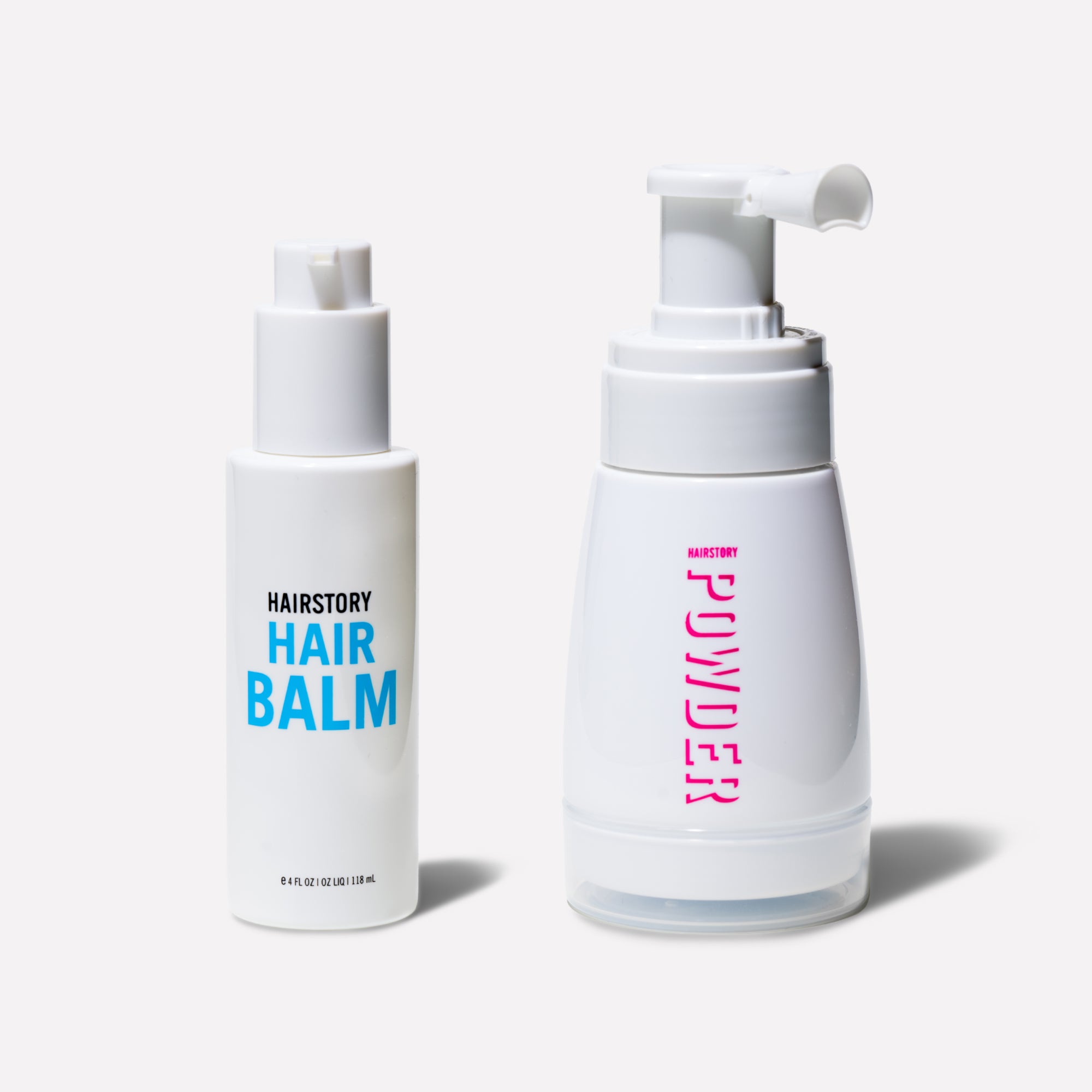Longer! Faster! Stronger! When you’re growing out your hair out, it can seem like it takes forever. When you’re losing your hair, however, time can’t pass slowly enough. You landed here for one reason or the other, and we’re glad you did because we can help anyone who wants a healthy head of hair growing on a steady, downward path. Things may soon be looking up.
Luckily, if you want your hair to grow longer, there are multiple ways to encourage a healthy growth cycle, such as a healthy diet, massaging your scalp, and avoiding heat tools. There is also a selection of hair cleansing products available to aid in growing healthy hair.
But before we dive into how to make your hair grow faster, let's discuss the hair growth cycle and how it works.
WHAT’S YOUR AVERAGE?
Hair grows about half an inch a month. But it’s not unusual if it grows a quarter or double that. In general, men’s hair grows somewhat faster than women’s (sorry, ladies), although pregnancy can accelerate it. Hair tends to grow a little faster during the summer and slow down during the winter months.
From your mid-teens through your late 20s, hair grows fastest, and slows down considerably afterward, and slows the most at the onset of menopause.
HOW DOES HAIR GROW, ANYWAY?
Each hair on your head (an average of 120,000 to 150,000 strands) grows in three cycles:
First comes the anagen or ‘active’ growth phase,which lasts anywhere from 5-7 years, during which a hair bulb contacts the base of the follicle and begins to receive blood and nutrients. A baby strand begins to grow upwards until it reaches the scalp, pushes its defunct predecessor from the follicle, and then makes its own way outwards and downward.
Next is the catagen or ‘transition’ phase,which lasts anywhere from a few days to a few weeks. The bulb detaches from its blood supply and moves up in the follicle, which shrinks in preparation to release the strand. Though still firmly in place, it can be dislodged by scratching or brushing your hair.
Last is the telogen or ‘rest’ phase, when little to no activity occurs within the hair follicles – except preparing for the anagen phase all over again. The hair follicles will once again widen and the hair strand will be released and fall, along with 50 – 150 other hair strands every day. You can identify a telogen hair by the white bulb present at the bottom (compared to one that broke mid-strand).
As we age or experience pattern hair loss, the anagen phase is shortened, which is why mature women have challenges growing hair to the length they might have earlier in life.
SO WHAT KEEPS HAIR FROM GROWING?
A healthy hair growth cycle depends on a number of factors, and some are under your control such as a well-balanced diet, stress, haircare, and medications. Others are less so: age, hormones, scalp health, and various health conditions all have an influence.
Protein Deficiency:The hair is composed primarily of keratin, a protein that is also found in our skin and nails. Inadequate protein intake can contribute to its breakdown. Dietary protein contributes to keratin formation and increases iron levels, which is also important for healthy hair.
Blood-Sugar Spikes:For people with insulin resistance, a spike in sugar can lead to a release of insulin. However, if the body is resistant, insulin isn’t taken into the cells optimally, which has been linked to hair loss, possibly due to a premature transition to the catagen phase.
Medications:Painkillers, antidepressants, blood thinners, and beta-blockers can cause slower growth, thinning, and loss.
Stress:When we’re under stress, we tend to take shallow breaths, which results in less oxygen intake. Oxygen is crucial to all of the bodily systems, and it goes to the most important organs first – the heart, lungs, and brain. Less oxygen is available for less essential systems, such as hair.
Disease:The stress of severe diseases like pneumonia cause hair to go through a stagnant period and prematurely enter its resting phase when hair growth temporarily ceases.
Rough Handling:Hair is a delicate fiber, and you’d be wise to treat it as such. Styling hazards such as face-lifting ponytails, wave-erasing heat styling tools, sharp fingernails, and stiff bristles are challenges to the scalp that some hair just won’t tolerate. Also, when hair is wet, it’s extra fragile. It’s worth your while to learn techniques on how to wash your hair and dry it properly. You can even be proactive by using silk pillowcases instead of “grabby” cotton.
A healthy hair growth cycle depends on a number of factors; some are under your control and others are less so.
Also, attempt to avoid shampoo and conditioner products with harsh chemicals if you are trying to grow long hair. Try washing your hair without shampoo and discover the positive effects it has on your scalp and hair. Take it one step further and swap out your conditioner for a hair cleanser, and you may be left wondering, “what does conditioner even do and why was I using it for so long?”
HOW TO MAKE YOUR HAIR GROW FASTER
Well-balanced Diet: Like the rest of your body, hair thrives with proper nutrition, and a balanced diet is perhaps the easiest and most effective way to spur growth. Focus on getting enough vitamins and minerals such as vitamin C, biotin, niacin, iron, and zinc. Stock up on fish, eggs, avocados, sweet potatoes, berries, nuts, olive oil, beans, whole grains, and foods rich in protein, biotin (vitamin H) and omega-3. Mediterranean diet anyone?
Circulation:Your capillaries are key. Rogaine, prescribed to counter baldness, started as a heart drug. During clinical trials, one of the side effects was increased hair growth as a result of opening up the capillaries and increase blood supply. Ample blood reaching the follicles and roots means the effective delivery of nutrients, vitamins, and minerals. When blood flow decreases, cellular growth stops, and hair bulbs stop growing and slowly die.
Scalp massages are Massaging your scalp is an effective way to stimulate blood circulation. flow. We offer a luxe ritual here, but your hair will thank you for whatever you can manage. Along with your fingers (watch those nails) some essential oils also promote blood circulation, such as Peppermint, Rosemary, and pumpkin seed.
While scalp exercises it might sound silly and sometimes look comical to massage your scalp or perform exercises, it can decrease tension in the scalp and loosen the skin to allow blood to flow more freely. Just as the muscles in your body can be worked out, so can the muscles in your head, specifically, your eyebrows. Here’s how to do it:
- Lift your eyebrows as high as possible, hold for a minute or two minutes, then relax.
- Furrow your eyebrows as deeply as possible, and hold this for a minute or two minutes, then relax.
In addition to these tips, be sure you are washing your hair properly each time and are not washing too frequently. See our tips on how often you should wash your hair.
IN CONCLUSION
The long and the short of it: while we have yet to find a magic hair accelerator that makes hair tumble toward your shoulders in record time, there are steps you can take to keep it from inching along glacially: treat your scalp well, feed your body well, breathe deeply. If you’re sensing that something else is making healthy growth challenging, it is probably time to visit your doctor about it.

















































